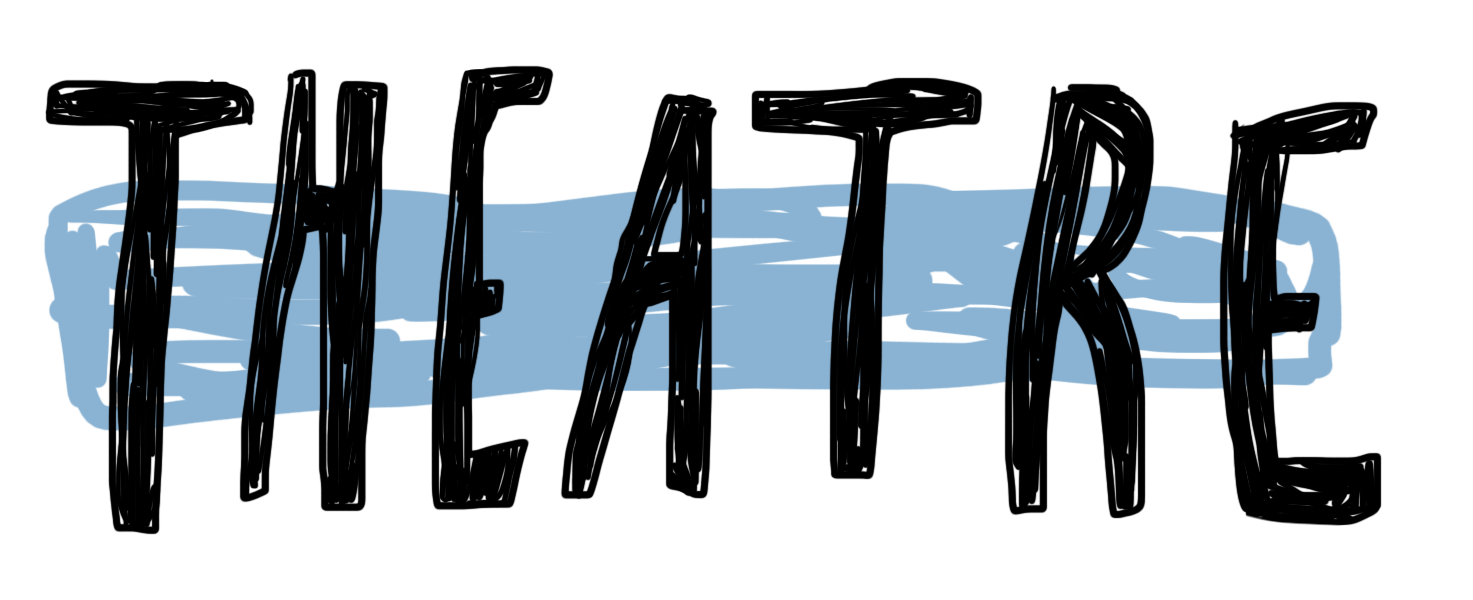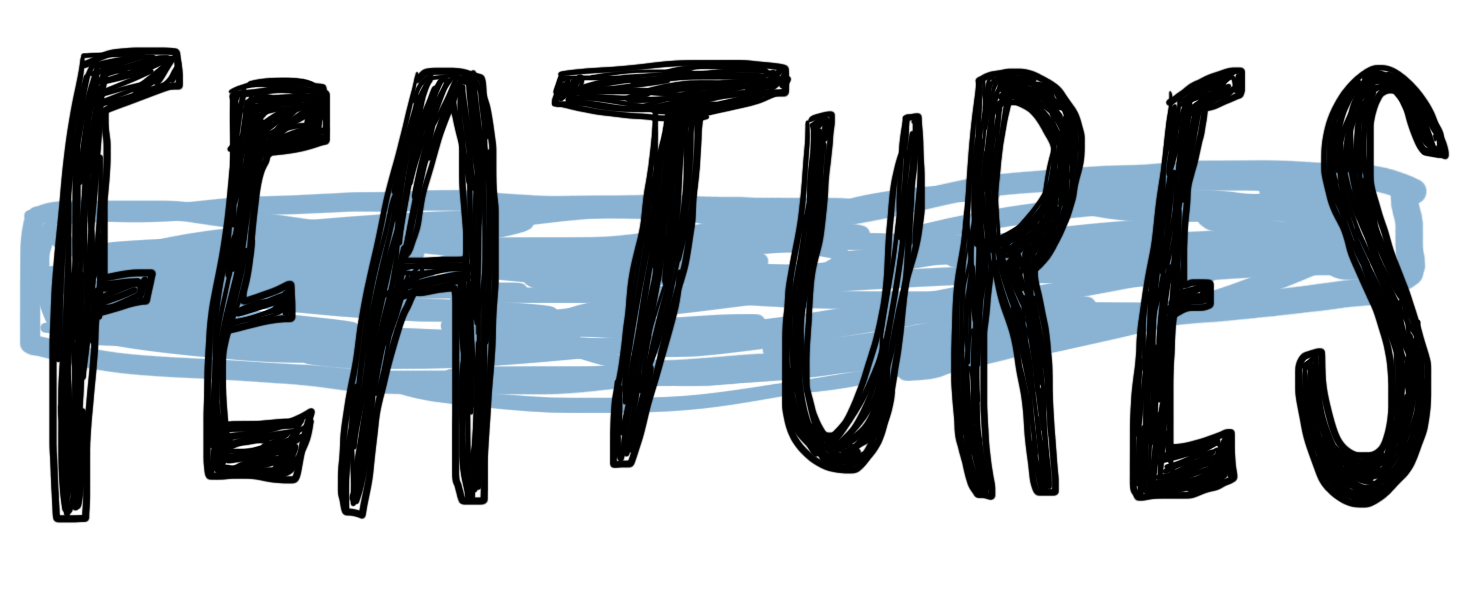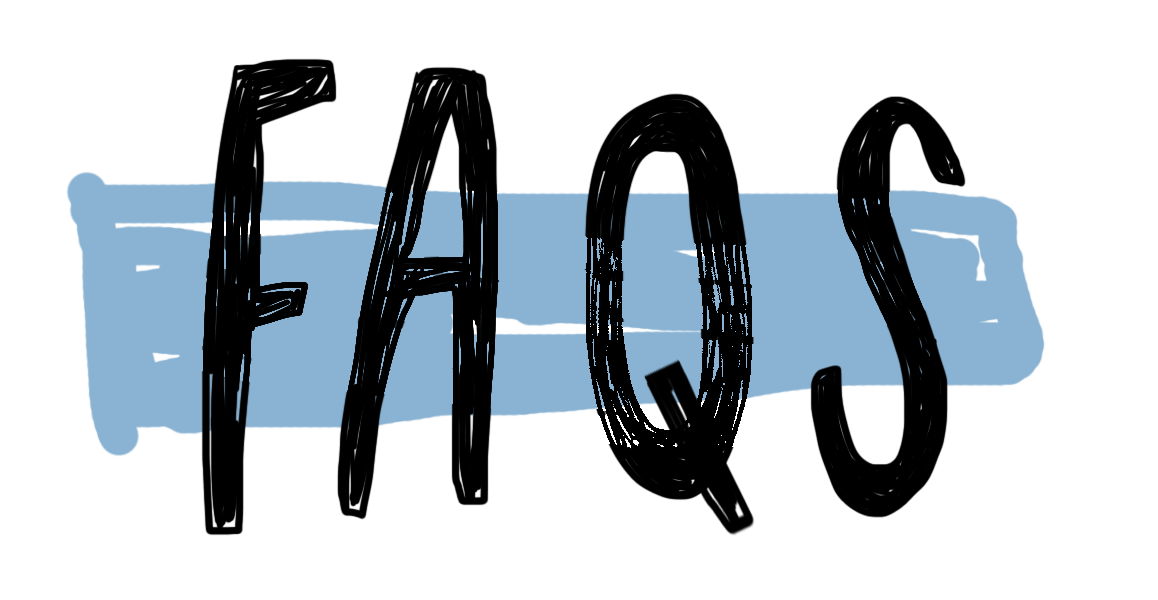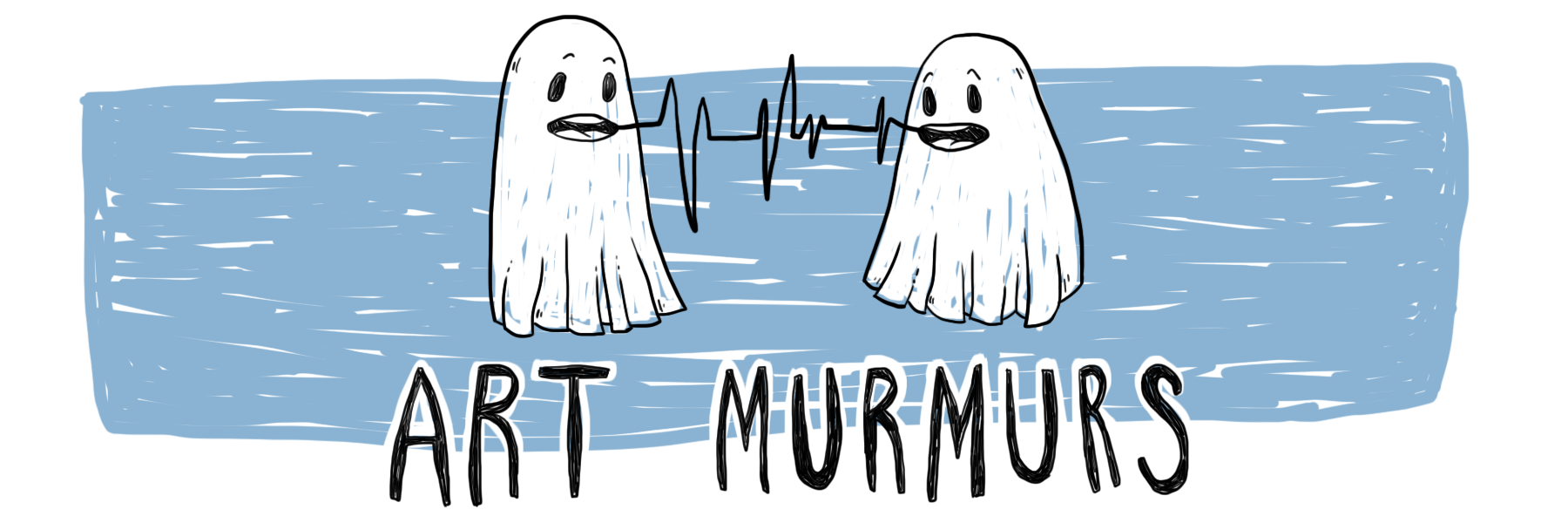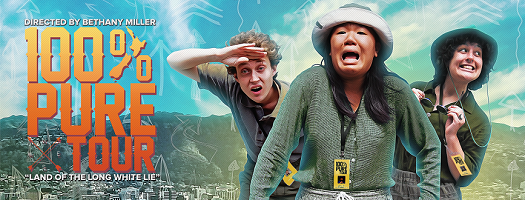By Shannon Friday
100% Pure touches on a LOT of hard conversations, often showing the ways conversations about ecological purity, racial politics, and New Zealand’s legacy of colonialism interact. These debates and conversations are literally staged by our three guides, who introduce themselves as we mill about, waiting for the group to assemble. Neil (George Fenn) is a perpetual tourist, self-proclaimed “citizen of the world, mate”, and unrepentant mansplainer. Safety Officer Shelley (Isadora Lao) wants to keep everyone safe and preserve New Zealand’s clean, green image, while Miriama (Emma Katene) is the "only real tour guide" and the show's voice of reason; tangata whenua, the keeper of knowledge, and the spirit of New Zealand. We’re given our headphones (the tour is audio-enhanced), and off we go.
As we move from the fountain all the way to Te Papa, the tour alternates between drawing attention to features of the waterfront (or in Shelley’s case, covering up hazards and anything that might harm NZ’s 100% pure image), and using the waterfront as staging areas for definitely pre-planned scenes between the guides.. It’s all backed by an epic “Lord of the Rings” soundtrack that transforms our 600m stroll into an epic trek through the depths of Mordor. As we pass the Wharewaka, we see some “locally grown concrete” and learn the story of the ancient saplings of the native karaka “forest” growing there.
When Neil misidentifies the karaka as pre-dating humanity’s arrival on the island, Miriama corrects him. “Actually, they came on the waka in the Polynesian migration,” she offers. “So they’re not really native then,” Neil tells Miriama, oblivious to the politics of that statement. Katene’s astonished face as she tries to form an acceptable reply speaks volumes. As she struggles to speak, Neil, who is also a visitor to these islands, steals the story for himself, claiming history as his own. Its colonization re-enacted in the personal, the gender and racial coding right in front of us. Neil’s authority comes at the expense of Miriama’s agency; he can only minimize, interrupt, and dismiss her expertise in cringe-worthy acts of conversational violence. As an audience, each of us is made well aware of who we get to listen to, and how stories from different points of view may differ. The scene puts the lie to the myth that history is settled and stable. As the characters struggle to put their ideas forward, we are left with the question of who and what we choose to listen to.
As Miriama and Neil go off to argue further, it is up to Shelley to keep our attention. But I’m honestly not sure what she does, as the audio in the headphones gives us Neil’s inner monologue; the show choosing which voice we listen to for us. As Miriama tries desperately to get him to listen to her and stop interrupting her, he details his beliefs that she fancies him. It’s a great exploration of privilege; who is responsible for holding history and who has to fight for authority on that history. At the same time, it feels double-percussive; I’m already watching Neil and Miriama interact not quite far away enough from the group.
I’m not really sure how Duncan Phillips’ audio fits in, to be honest. I compare its integration to shows like Ancient Shrines and Half Truths or The Woman Who Forgot. Like in The Woman Who Forgot, the audio is isolating, separating me from other audience members and the performers. In TWWF, the audience was clearly cast as the protagonist in the story. The audio served to highlight the audience member’s sense of uncanny displacement. With 100% Pure, the headphone audio divides our focus, fighting with our casting as a group of tourists. At times it forces an emotional experience, showing how manipulative and moving simple narratives can be, such as when the majestic orchestral chords of the Lord of the Rings soundtrack rise as we stare meaningfully into the middle distance. At other times, vocal narration competes with the tour guides, who also speak to us, reinforcing 100% Pure’s obsession with conflicting historical narratives. And at other times, it makes explicit the actor’s subtext, as if the director is worried we won’t “get it” from the actors’ performances alone.
100% Pure ends with a wonderfully weird scene. Having quit the tour in disgust, Miriama comes back as the avenging Spirit of New Zealand. Moving in slow-motion, her arm outstretched and eyes fierce like Eleven from “Stranger Things”,The Spirit of New Zealand curses the unrepentant Neil for the harms his lies have done to New Zealand. Shelley cowers behind an audience member, cringing and begging to be spared. The Spirit of New Zealand spares her, acknowledging that she really is trying and tenderly imploring her to just do better in the future.
This ending, while entertaining as hell, feels abrupt and out of place. While I love seeing Miriama claim her power, her decision to absolve Shelley is a straight-up retread of the “Magical Native” trope, and it doesn’t really address the ways Shelley has been complicit in building New Zealand’s mythical image. It’s an easy story, when up to now the show has been showing us all the messiness behind our easy narratives. The show tries to tie up these complicated strands instead of sticking with its hilariously untidy “THE CAKE IS A LIE!” philosophy. I understand why: it feels exciting when a tour has a grand ending; you can send folks away on a high note. At the same time, the tidiness implies that “trying harder” is enough to understand -- or even untangle -- the legacy of colonialism in NZ; 100% Pure Tour lets us off the hook. The struggle over history and place is put away too easily; like I can put these questions back in my pocket along with my earbuds. And I don’t want to leave the show a tourist, free of history’s enduring conflict, encouraged to enjoy the rest of my visit.
